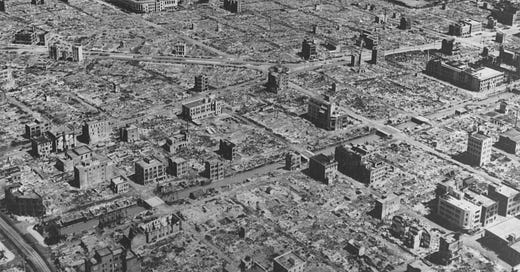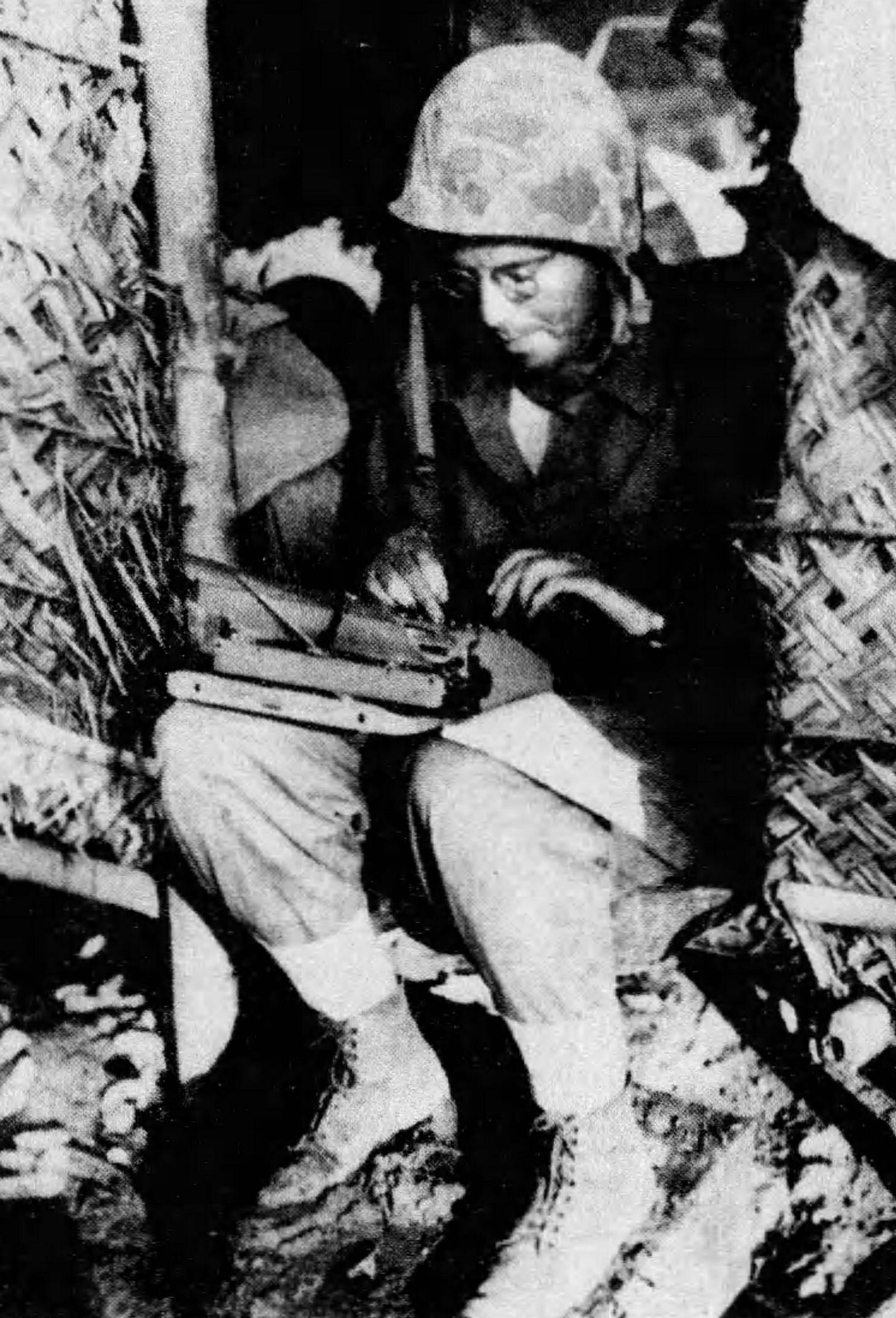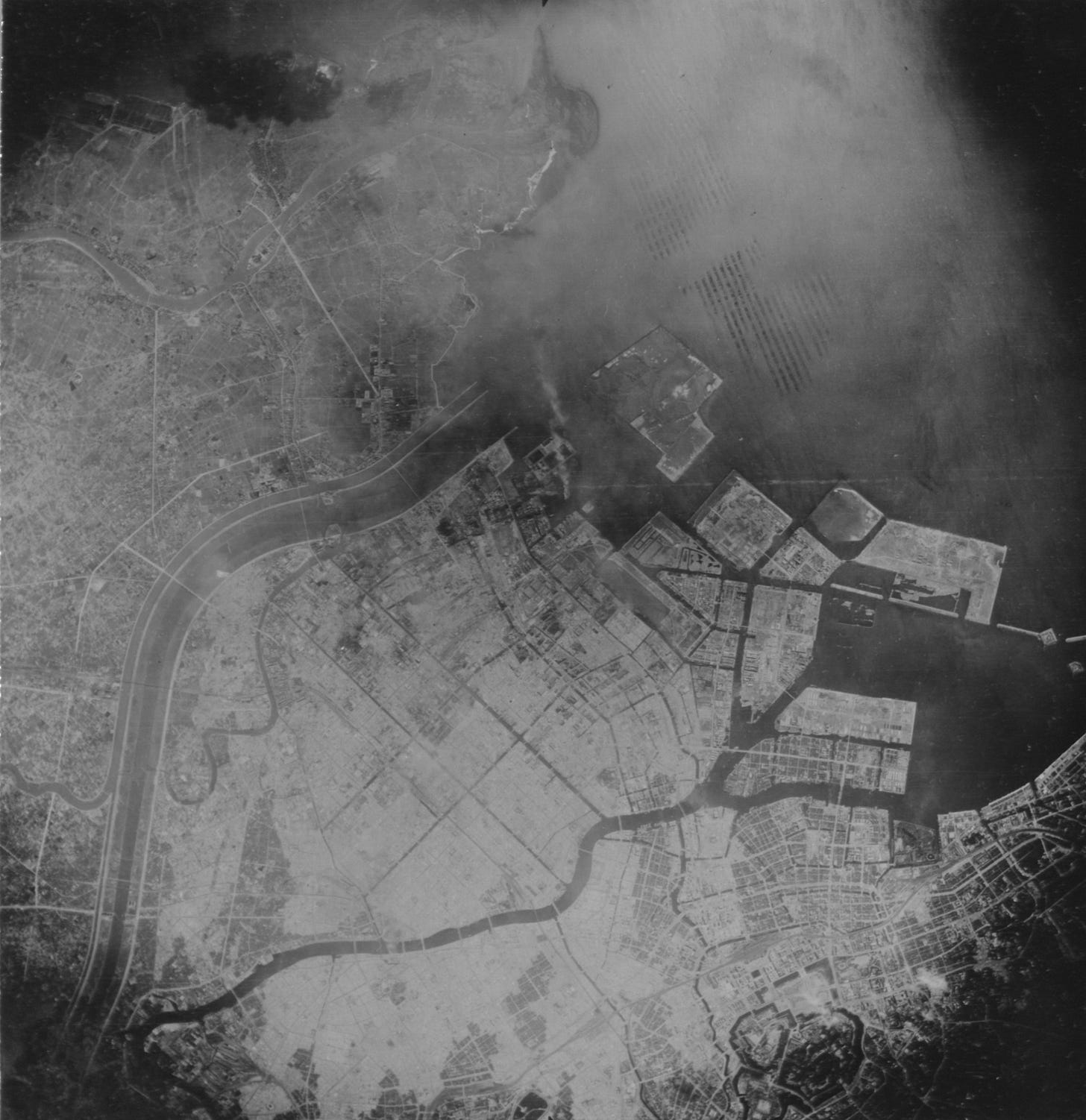Shortly after sunset on March 9, 1945, Martin Sheridan watched the airfield on Saipan fall away as the B-29 dubbed Patches by its crew headed for Tokyo to play its part in the deadliest bombing raid in history.
The Boston Globe correspondent’s eyewitness story, which appeared in print March 11, chronicled the inferno that swept across Japan’s capital from the perspective of the men inflicting the destruction.
Sheridan’s bomber was back in the line a bit among the more than 250 Superfortresses on the mission, making targeting a simple proposition: “The navigator didn’t have to give the pilot the bearings toward Tokyo because 40 miles from the blacked-out city we could see the reddish glow of the burning capital on the horizon.”
The bomber flew through high clouds of smoke from fires already burning, the smell filling the aircraft.
Suddenly there was an opening through the pall and the clouds, and there lay Tokyo.
I have never seen such a display of destruction, nor had such an experience. Fires were raging in several multi-block areas and creating almost daylight conditions, there were hundreds of blazes throughout the waterfront area, the most densely populated section in the world.
The firestorm below produced strong updrafts that bounced the gigantic bomber up and down in the midst of its bomb run. The pilot, Maj. Walter F. Todd, later said he thought they had been hit by flak at one point, but it was merely turbulence.
A moment later, 2nd Lt. Leo P. Ziemianski of Buffalo, N.Y., navigator, sang out “Three … Two … One — Mark!” At the last word, bombardier 2nd Lt. Thomas C. Moss, 22, of Aurora, Ill., dropped his eggs in the target area.
As a civilian non-combatant, my contribution was limited to throwing down a brown beer bottle, empty, of course. Several searchlights played on the plane a few moments but we saw no interceptors and only a few scattered flak bursts. We did see the city getting a terrific pasting from the air and they’ll need a highly efficient fire department to put out blazes of those proportions.
Sheridan’s somewhat flippant tone about the conflagration is interesting, particularly given his personal background: He was a survivor of the 1942 Cocoanut Grove fire in Boston, which had killed his wife and nearly 500 others.
But for the men on the front lines and the correspondents accompanying them, anything that sped the end of the war after years of fighting was a positive.
By a purely military measure, the raid was an unfettered success. It had leveled a significant swath of Japan’s capital city and killed perhaps 100,000 people, while the Americans lost 14 planes and 96 airmen.
The architect of the mission, Maj. Gen. Curtis LeMay, enthused over the initial damage reports from returning pilots at 21st Bomber Command headquarters on Guam.
“This looks like the most successful attack we have made to date,” he told reporters, before cautioning: “Don’t get too enthusiastic until we see the photographs.”
The photographs showed utter devastation. In the picture below, the white areas are completely burned out.
The indiscriminate nature of the bombing has been widely criticized in the decades since. (Malcolm Gladwell’s Revisionist History podcast recently did a four-part series on LeMay, which includes extensive discussion of the Tokyo firebombing.)
But contemporary news coverage about the mission’s objective was matter-of-fact. Elmont Waite’s Associated Press story from Guam notes that the ordnance consisted entirely of incendiary bombs, and that “industrial workers’ homes” were among the targets in “highly flammable, congested central Tokyo.”
Waite quoted Brig. Gen. Thomas S. Power, who circled overhead for the duration of the raid plotting fires with a red pencil on a chart he triumphantly presented to LeMay upon his return.
“The area below me was literally a sea of flame,” Power said. “It was the greatest show on earth.”






This photo and article is about my late father, Martin Sheridan, who was a Boston Globe War Correspondent in the Pacific in WWII. Thank you for writing this article about him. He was also the only non combatant allowed out on a submarine war patrol during WWII. He was not supposed to be there but apparently Admiral Chester Nimitz let him go. Dad subsequently wrote his second book on the USS Bullhead about his experiences on the first patrol in 1945. He dedicated his book to the sailors on the submarine’s third patrol which was sunk by the Japanese on the final day of the war. It’s title is “Overdue and Presumed Lost.” My father was also the only newsman who was in a B29 flying in the firebomb raid over Tokyo in 1944. He reported to Curtis LeMay at the news conference after the raid that his plane was the only one with a camera that took photos of the raid. He also was on a transport ship (USS Fremont) in 1944 in the Pacific 2,000 miles from Boston when a young sailor walked up to him on movie night. He asked if my father was Martin Sheridan. When my father answered yes, the sailor told my father that he was the man who pulled him out of the burning Cocoanut Grove nightclub in Boston on November 28th 1942. The 492 victims died in the fast moving fire that lasted less than 20 minutes. My father received 3rd degree burns but sadly his first wife died in the fire.